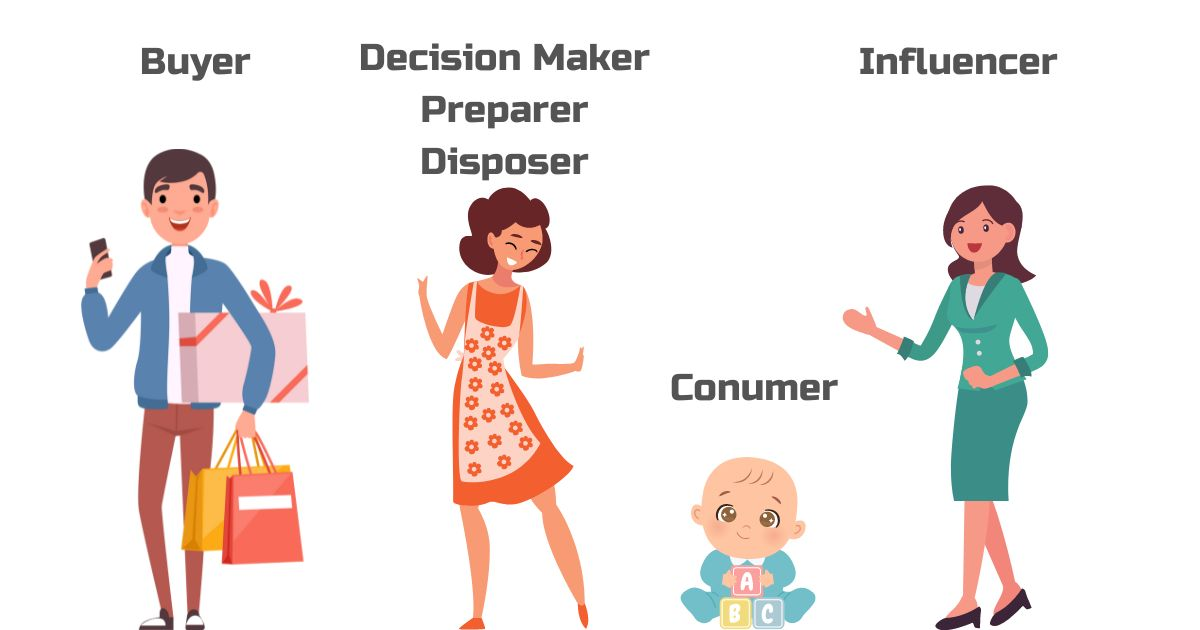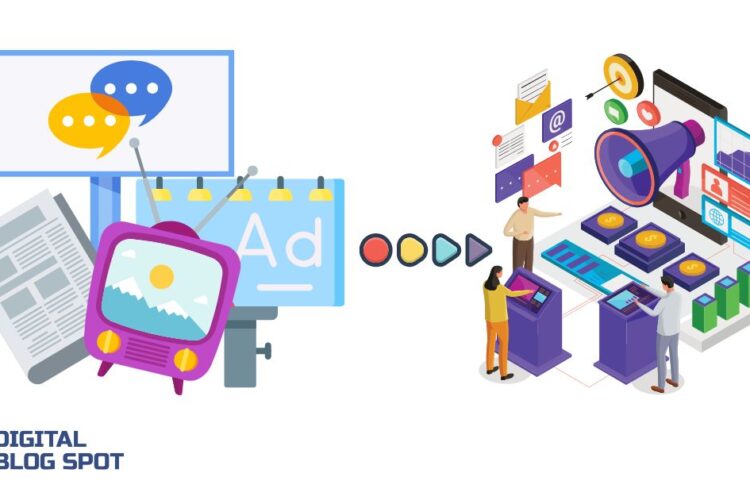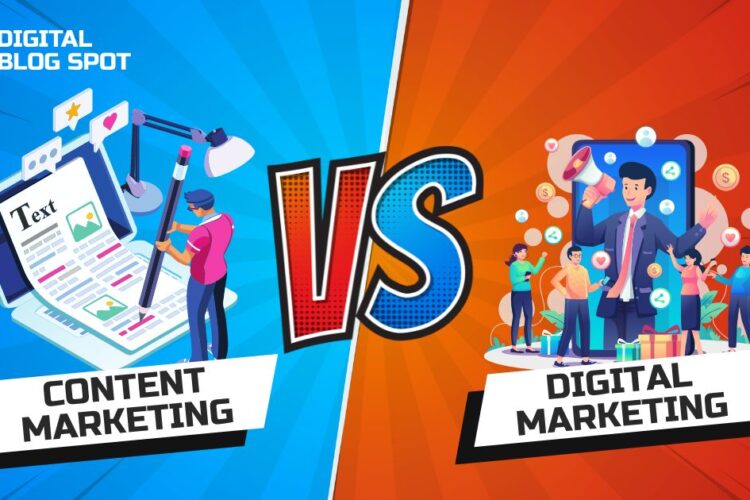
A lot of marketers can confuse affiliate marketing with influencer marketing as the same channel of communication.
However, if you take a closer look, you will find that they are two totally different channels of communication. Each has its own use cases and goals.
How Influencer and affiliate marketing came to life
Social media platforms have started with the objective of keeping users active on their websites through interacting with the regular content provided by content creators.
For that reason, social media platforms had to find a method of rewarding content creators who generate constant high-quality content.
The best way to do that was via increasing their online reach and allowing a large number of users to follow their accounts. Later, came the idea to share advertising profits with any content creator whose content reaches a large number of views.
Besides their advertising profits, those content creators were diversifying their income sources through other channels.
Those channels included sponsorships and commission-based advertising and from here the idea
Consumer Roles
There are a lot of backstage events and social interactions happening behind every purchase action taken.
Let’s take for example a simple product such as baby diapers. This simple product has many roles of consumers involved with its purchase.
At first, the mother starts to research which baby diaper products are the best. She might not trust advertisements so much, so she would go asking around.
One of her friends referred one of the brands to her called Pampers, and she said based on her previous experience the product proved good functionality.
The mother then, after evaluating other brands, made her decision to buy that product. The mother, however, at that time doesn’t go to the supermarket a lot. So, she wrote a list to the baby’s father asking him to buy that specific brand of pampers for the baby.
When the father bought that product, he delivered it to the baby’s mother and she used to change the diapers for the baby probably three times a day.
The baby’s health was good and his skin wasn’t in any way harmed.
When the mother changed the diaper the first time, she was worried whether the diaper would leak on her hand or anything when trying to dispose of it. Fortunately, that didn’t happen and the process was completely smooth.

In the above short story, the following roles were carried out without notice:
Influencer: The mother’s friend who referred to the product as a good option
Decision Maker: The mother who made up her mind to buy Pampers after evaluating all alternatives
Buyer: The father who went to the supermarket, read the list, and then picked the product.
Consumer: The baby who the product was applied for.
Preparer: The mother who used to dress the baby in a diaper.
Disposer: The mother when she was throwing the diaper away.
The above scenario can be applied to almost any product in order to identify your leverage point.
Influencers typically play a huge role in the decision-making process as demonstrated in the above example. That’s why influencers can play a great role in convincing your target audience to buy any given product.
What is Affiliate Marketing?

Affiliate marketing stands for using third-party content creators and influential entities to review and reference your products to their readers, viewers, or listeners. Affiliate marketing works on a commission basis and its major objective is to increase sales volume.
Running an affiliate program involves approaching a number of third-party publishers and content creators who have a large audience. Those third parties then mention your product in the context of their shared content and can even work directly to promote products of your brand.
However, those affiliates are not supposed to go advertising your brand on the same channels you are using to advertise in order to avoid competing yourself.
What is Influencer Marketing?

Influencer marketing works through making a deal with one of the influencers who have a large base of followers or subscribes on at least one social media channel to promote your brand.
Social media influencers come into play with a broad range of content types. And since influencer marketing focuses on increasing brand awareness and brand exposure, you have to be picky with the type of influencer you are planning to use.
Logically speaking, you can’t go asking an influencer with a million followers to promote your sportswear brand if his major type of content is to explore fast food restaurants.
On the other hand, influencer campaigns should be very precise in choosing the type of content generated by the social media influencer.
In today’s world, influencer marketing is a major communication channel that should be integrated in any marketing strategy. Influencer marketing can be crucial through the awareness phase of establishing a new brand or exploring a new market segment.
What are the core differences between affiliate marketing and influencer marketing?
Despite both channels being highly dependent on other third-party promotions of your brand, they still have a range of differences that can set them apart.
Goals and Objectives
The major objective behind an affiliate marketing campaign is to drive sales. So you are tackling the user at the end point of his buying journey.
That’s why integrating an affiliate link in a blog post that reads “best 5 tools for…” or “-brand name- review and best uses” can yield the highest results, as it intercepts users at the final review step before buying.
Affiliate marketing benefits both parties of the deal, as the business reaches new customers beyond his own and encourages them to convert, and the affiliate gets sales commissions for each sale he drives.
That’s why affiliate marketers are focused on tackling some topics that can get as many sales as possible instead of broad topics that can generate high interest but low conversion potential.
Influencer marketing on the other hand is more focused on shooting for the broad subjects that can be of high interest to a large audience. Most marketers are planning to increase brand awareness when thinking of an influencer marketing campaign.
Interaction and Relationship
Social media influencers aim to build long admiration and likeability within their audience. They want users to follow their accounts and increase their social media engagement levels.
When making an influencer marketing campaign two factors should be evaluated, fan base and engagement levels. You don’t want your social media posts to only have a large share of exposure, but end up not being noticed.
An Influencer that has a high engagement rate, can guarantee you a certain level of engagement in terms of comments, reactions, or link clicks. Based on those interactions, you can identify how their audience impacted your campaign and determine whether your campaign was a success or a failure.
Affiliate marketers are more focused on delivering high-quality content. Their goal is to get convince more users into buying the products they are advertising.
Hence, they aim to be comprehensive and elaborate in crafting their content. Conversions with affiliate marketers do not necessarily come from constant followers or fans of the influencer.
Take YouTube and Blogs for an example here; how many times did you watch a brand review for someone you have never seen before. You can even get convinced the product or service they are promoting is good and buy from their links without subscribing to their channels.
That’s the idea, affiliates are not looking to build large audience bases, but they are more focused on providing high-quality convincing content for potential customers.
Budget and Commission Model
Both influencer and affiliate marketing campaigns required some budget to get started. The payment models however are totally different.
Influencer marketers have rate cards and prefer to be paid upfront. Each influencer’s industry has an average rate according to number of followers and engagement levels.
Once a deal is made, it doesn’t matter how many impressions the social media post made or how much engagement was generated, the payment remains the same.
Of course, some influencers can give you an extra post or reel to balance the situation, however, this is not always the case.
Affiliate marketing budgeting scheme however is more of a win-win situation, as an affiliate marketer only gets paid when he starts to drive sales.
Can Affiliate Marketing and Influencer Marketing overlap?

Of course, there are many situations in which affiliate marketing and influencer marketing can work the same way. There are even times when a marketer can use an influencer for both campaign types.
Some influencers have built a decent amount of followers, on a wide range of platforms. Take for example an influencer who has his own YouTube channel and may also be writing for one of the major blogs sharing constant publications. You can use such influencers for making a deal covering both brand exposure and increasing sales volume.
You can consolidate your marketing efforts as well to provide a link for your influencers or support them with a promo code in their name. If their users buy through their specified link or promo code you would be able to track and reward them.
You can even create a hybrid deal, where you can pay half the price in their rate card and agree to commission them for the number of sales they get you.
How to start an affiliate program?
Decide which products you want to promote
If you’ve been around in e-commerce for a while, you would realize the most often high-value products are harder to sell. Yes, those ones are the most profitable when sold, yet they are harder to move as fast as the cheaper ones.
That’s one affiliate marketing that should come in handy. High Average Order Value (AOV) products represent a higher profit potential for both your business and the affiliate marketer alike.
After all a 20% commission on a higher priced product can generate much more revenue than a 30% on another that’s half the price.
Try to help your affiliates with product recommendations and promotional activities that can help them market your product even more. Maybe a price cutdown, free shipping, or a cart value discount.
Study your target audience buying behavior
Research is a basic step before moving forward with any big move. In order to have a solid base of understanding and vision that can guide you through.
When you study your target user’s behavior, you can learn which platforms are they available on, what search terms are they using, and what motivates them to buy.
Learning about all the above factors will help you target the right affiliates on the best platforms. It will even help tailor some nice promotional materials for your affiliates to use.
For example, if you are advertising sportswear and gym equipment, you might find that your audience is learning some exercises on YouTube and Instagram and start finding affiliates who specialize in those platforms. You can also look for trainers and health blogs that write articles about the most helpful workouts or meal plans.
Build a profitable yet attractive commission plan
The idea here is to look for the right balance between profiting and being profitable. I’ve become pretty wisdomous in my words “As Joey Tribbiany says” haven’t I? =D
But yes, you should be looking for the right commission percentage that secures you almost the same profit margin if you were to advertise those products on other channels.
For further clarification, let’s say that your cost per conversion for social media conversion campaigns has an average of 20$ per sale. And you are selling products that are priced at an average of 100$.
Your commission for the affiliate program should reflect that same Cost per Conversion. That way you would secure yourself a different channel that doesn’t come at an extra cost, but with the additional good word of mouth.
And there is another benefit. You wouldn’t be taking care of the campaign and it would be evergreen, meaning you have established a passive income stream.
Choose an affiliate marketing program provider
Choosing the right affiliate marketing program provider should be done with good care. After all, it’s your reputation on the edge if affiliates were selling and not receiving their commissions.
Moreover, you should consider the amount and quality of affiliates registered to that provider.
Start approaching affiliates
As soon as everything has fallen into place, start approaching affiliates with your proposals to establish an adequate base of promoters.
I would advise you to diversify your selection. So don’t choose them all sharing content on blogs, or YouTube, or Instagram. Try to build a portfolio of all types of content creators from a diversity of platforms.
That way you would be sure you are spreading everywhere, and if one of those content-sharing methods dies, you are secured with the others.
How to plan an influencer marketing campaign?
Influencer marketing campaigns are much simpler in planning, however, they can be much more costly and harder to measure.
Identify your marketing objectives
Initially, you would need to identify your objectives. Are you looking for new followers? Are you looking to build brand awareness? Maybe you want to generate more web traffic.
Being certain about one major goal that will guide your campaign will help you identify influencers that are the best match for your campaign.
Identify your campaign budget
Influencers are too many nowadays and their rate cards are going crazy. That’s why if you don’t have a pre-set budget for your campaign, you might feel a bit overwhelmed.
The good news is you can spread things out over a full year. Some marketers think it is better to use a large number of influencers together at the same time to generate a buzz, while others believe to keep a consistent word of mouth going on between a number of influencers assures you stay top of mind.
Depending on your marketing strategy and your goals, choose the strategy that suits your business best.
Understand the nature of your product
The nature of your product is still quite important in order to identify what influencers are most relevant to you. Also, the pricing point of your products will play a major role in identifying influencers with target audience classes.
If you have a wide range of products from a variety of categories and different spread-out pricing points, you might consider selecting a few products for each round of influencer campaigns.
Create a list of potential influencers
Same as with affiliate marketers, you would need to build a list of potential influencers. But this time before approaching each of them, you will have to pass another point first.
Some marketers in today’s world tend to focus more on micro-influencers. Those types of influencers generally have smaller counts of followers and less expensive rate cards. Marketers consider influencers with fewer follower counts more credible to their users, as users who follow them are generally of closer circles and might be influenced by their opinions even further.
That in addition to having a number of micro influencers all speaking about your brand will leave you a bit relieved about the overlap that might be happening between the followers of the different influencers.
Shortlist your potential influencers
If you are looking for brand awareness, then an influencer’s fan base would be your evaluation criteria.
However, if you are looking for engagement, traffic, or new followers, you might consider those influencers’ engagement rates and only choose the ones that pass your acceptable range.
Run your campaign and start measuring
It doesn’t end with publishing their social media posts. You should always be measuring results and keeping track of what strategies and which influencers got you the highest results.
That way, you would be able to optimize your upcoming campaigns and be much more precise in choosing the next round of influencers to represent your brand.
Conclusion
Both affiliate and influencer marketing are pretty useful marketing strategies. In spite of their different objectives, they both prove greatly helpful in achieving results.
E-commerce can make better use of affiliate marketing by generating more sales from credible word of mouth and the sales techniques of affiliate marketers.
Marketers on the other hand can use influencer marketing to give their brand exposure and social media engagement a large boost.
Each method has its own way of working, but understanding the nature of your product and your target audience is crucial for both.
Sometimes influencer marketing and affiliate marketing can be merged under the same campaign but that is not usually the case.
Now it’s your turn to share with me how you used to benefit from each and have you previously considered running an affiliate program? What were your challenges?
Let’s keep this article going in the comments.




